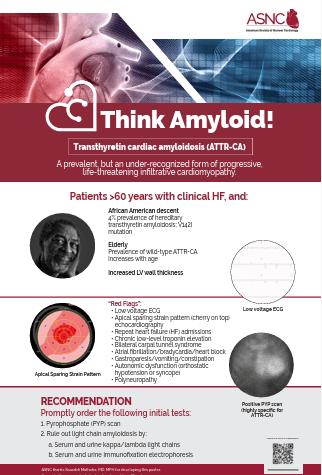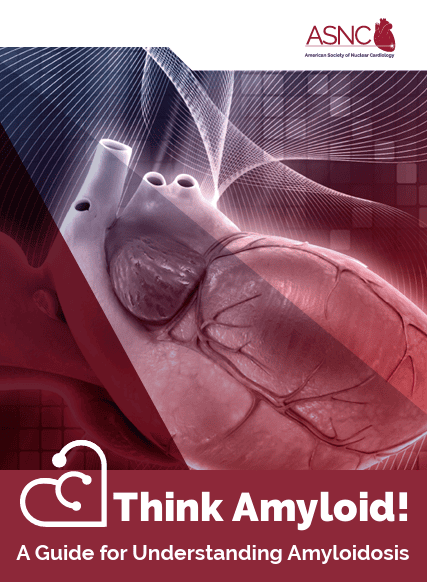Looking for Cardiac Amyloidosis in Your Community: 3 Approaches That Work for Busy Practices
We still have a long way to go.
This statement was a key takeaway from the Amyloidosis Research Consortium’s latest Annual Community Survey.
“We have seen improvements in awareness and journey to diagnosis,” Consortium President Isabelle Lousada said at this year’s Masterclass in Cardiac Amyloidosis. “But it still takes too long.”
Physician experts often echo Ms. Lousada’s point. Yes, they say, the field of cardiac amyloidosis has come very far very fast. Less than 20 years ago, cardiac amyloidosis wasn’t “a field” at all; it was viewed as a rare condition, certainly not the underlying cause of a significant number of their HFpEF cases.
In contrast, today ATTR-CM is driving innovation across cardiovascular care. Just under 30 percent of scientific abstracts presented at ASNC2025 featured new data on cardiac amyloid. Investigators are working nonstop to validate emerging radiotracers, test new treatments, and understand the effects of the 3 FDA-approved medications in different populations of patients with ATTR-CM.
Despite breathtaking advancements in diagnosis and treatment of cardiac amyloidosis, a major hurdle is still detection. In other words, finding the individuals who should be tested for cardiac amyloidosis so they can get started on their journey toward effective management as early as possible.
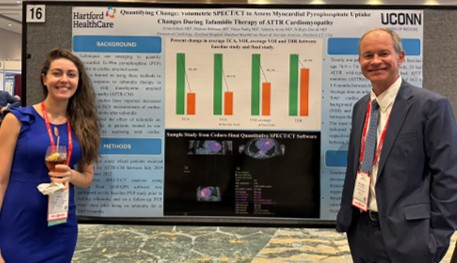
ASNC2025 attracted a record number of abstract sessions, nearly 30 percent of which featured new cardiac amyloidosis research.
“This is the pattern we see in medicine,” said Prem Soman, MD, PhD, MASNC, an ASNC past president who presented this year’s Mario Verani Memorial Lecture. “Practitioners in a given area realize that early detection would lead to improved outcomes, so clinicians, patient advocates, industry partners, government agencies, everyone comes together in a concerted effort to expand awareness and step up screening. We’ve seen it with different cancers, with heart failure, with coronary artery disease. It takes time, but it works.”
This is where the field now is with amyloid, Dr. Soman explained. “We are much better at early detection today than we were even 10 years ago, but we do have a long way to go.”
How can your practice accelerate early detection in your community? Here are 3 approaches to consider:
1 – Train Your Brain to ‘Think Amyloid’
An important first step is for clinicians to take cardiac amyloidosis out of the “rare disease” category where they may have shelved it during training.
“The fastest growing segment in the worldwide population are people over the age of 75, and that’s the people who are going to have this condition,” said Mathew S. Maurer, MD, during a recent JACC Journal Club podcast. “I think every cardiologist needs to be aware of [cardiac amyloidosis] and will ultimately be taking care of people with it. If you think you’ve never seen it, the answer is you probably missed it.”
If you are not “thinking amyloid,” you will miss it, Dr. Soman says. “Whatever else we might do – checklists, cheat sheets, you name it – the first step in the process is to think amyloid.”
“If you are not thinking amyloid, you will miss it. Whatever else we might do – checklists, cheat sheets, you name it – the first step in the process is to think amyloid.”
- Prem Soman, MD, PhD, MASNC

The goal is to route your brain to pause anytime you see a patient with left ventricular hypertrophy and clinical heart failure, and ask yourself if amyloidosis could be causing your patient’s symptoms. Are there other symptoms and exam findings that point toward amyloid?
2 – Talk Amyloid: Help Your Team Look for Amyloid
The next step is to educate your colleagues about amyloid, and give them tools to guide their thinking.
“You don’t need to be an amyloidosis expert to think about amyloidosis or to start the workup,” said Jose Nativi-Nicolau, MD, MSc, during ASNC’s recent Think Amyloid! Cardiac Amyloidosis for Community Cardiologists webinar series, where he shared lessons from his experience building amyloid centers of excellence.
Dr. Nativi-Nicolau recommends creating a simple symptoms checklist to be used by all clinicians who see patients with heart failure. The checklist should include musculoskeletal problems, especially carpal tunnel syndrome and spinal stenosis, which can develop 5-15 years before cardiac amyloid will be seen on an echocardiogram or MRI.
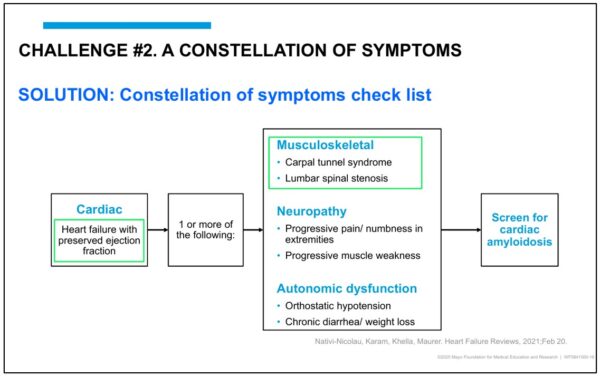
A Constellation of Symptoms. From Nativi-Nicolau, J. Putting It All Together to Establish an Amyloid Program in the Community. Presented at American Society of Nuclear Cardiology Think Amyloid: Cardiac Amyloidosis for Community Cardiologists, June 19, 2025. Slide reprinted with permission of the author.
“It takes 10 seconds to ask about these 2 conditions,” Dr. Nativi-Nicolau said. “A very, very small symptoms checklist can have a big impact on patients who are already in your clinics and your centers looking for help for their cardiovascular and musculoskeletal problems.”
ASNC supports multidisciplinary education with its Cardiac Amyloidosis Resource Center, which includes free, downloadable posters customized for clinicians in different settings: Primary Care Clinics, Cardiology Specialty Clinics, Echocardiography Labs, and Inpatient Floors.
“Never pass up an opportunity to talk about amyloid,” Dr. Soman recommended. “If a colleague refers a patient because they suspect amyloid, I always call back to talk about the results. Whether the patient’s results were positive or negative, we close the loop and encourage them to keep thinking about amyloid going forward.”
3 – Raise Public Awareness of Cardiac Amyloidosis
Whether because of your professional role or your personal connections, you might be invited to talk about cardiovascular disease at community events. Look at these forums as opportunities to introduce information about cardiac amyloidosis to the public, and be aware that these events could open the door for you to connect with other public or patient groups. ASNC invites you to distribute its downloadable pocket guide for patients and their families.
Case in point: A few years ago, Saurabh Malhotra, MD, MPH, FASNC, accepted a patient’s invitation to present to her church’s congregation about cardiac amyloidosis. "I spoke extemporaneously – no slides – describing the symptoms and explaining that cardiac amyloidosis is a generational disease common in Black populations," Dr. Malhotra explained. "We handed out ASNC’s patient guides with my contact information so the attendees could look at it later and, if they had symptoms or a family member did, they would have a mechanism for reaching out to me. The goal is for them to be seen before they develop profound disease."
Dr. Malhotra, now director of ASNC’s Masterclass in Cardiac Amyloidosis, has since spoken at other community events, including the Faith Leaders Initiative, which hosts weekly video calls on health issues, and a Heart Month Awareness activity hosted by New Direction Health Care Solutions. The latter event led to media coverage of cardiac amyloidosis on a local television news program.
“We handed out ASNC patient guides with my contact information so the attendees could look at it later and, if they have symptoms or a family member did, they would have a mechanism for reaching out to me. The goal is for them to be seen before they develop profound disease.”
- Saurabh Malhotra, MD, MPH, FASNC
Faith-based outreach can be an especially effective approach to reaching the public, recommended Foluso Fakorede, MD, a Masterclass presenter who shared his expertise on public outreach and patient advocacy. “At churches, you get families, referrers, nurses, all under one roof,” he said. “That’s where you find the community navigators.”
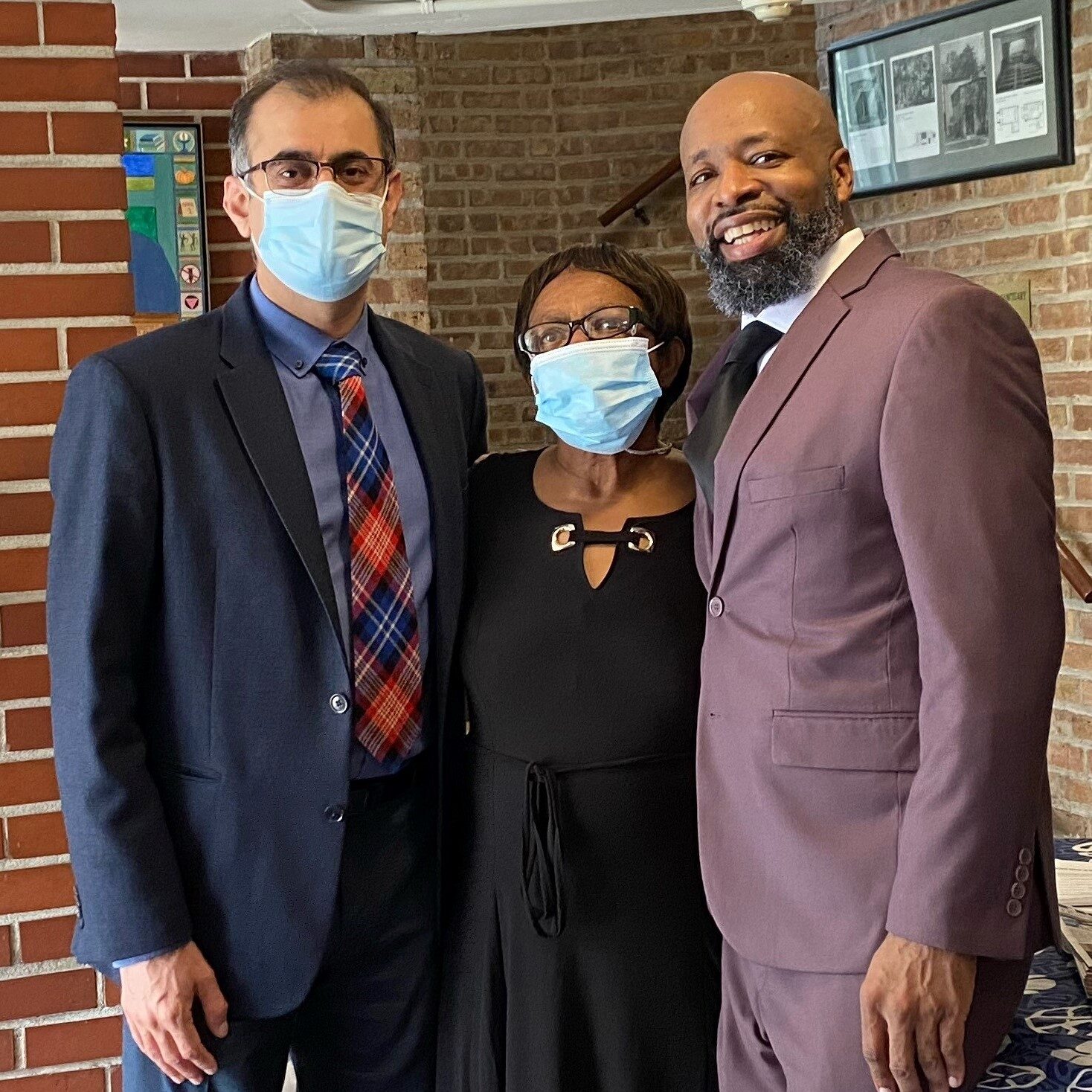
Cardiologists Are Leading the Way
In addition to showing opportunities for improved detection and diagnosis, the Amyloidosis Research Consortium’s Annual Community Survey revealed how far the field has come. In the most recent survey, patients with wild-type ATTR-CM reported they saw, on average, only 2 physicians before they got their diagnosis. That’s a significant improvement on what patients were reporting just a few years ago.
The survey also revealed a shift in who is arriving at the diagnosis. “Particularly for wild type, cardiologists are the leaders,” Ms. Lousada said.
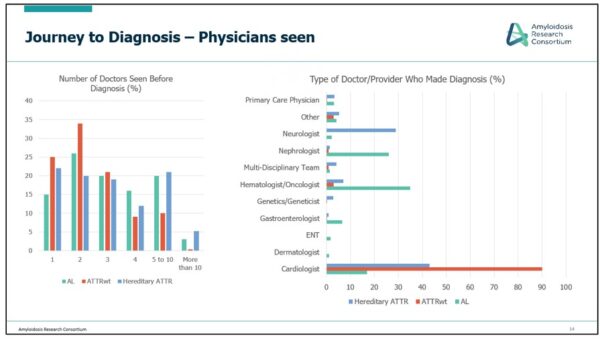
Journey to Diagnosis – Physicians Seen. From Lousada, I. Amyloidosis in the Community. Presented at American Society of Nuclear Cardiology Masterclass in Cardiac Amyloidosis, March 10, 2025. Slide reprinted with permission of the author.
Become a Leader in Cardiac Amyloidosis Care in Your Community
Start by marking your calendar to attend these cardiac amyloidosis programs in 2026!
- Masterclass in Cardiac Amyloidosis, a virtual event designed for all clinicians involved in the diagnosis and treatment of cardiac amyloidosis. The next program will be held March 13-15, 2026, and is complimentary for all attendees.
- ICNC 2026 – The International Conference on Nuclear Cardiology: Hosted by ASNC and the European Association of Nuclear Medicine, ICNC 2026 will be held May 17-19 in Berlin, Germany. Registration will open soon!
- ASNC2026! Join the nuclear cardiology community September 17-19 in Las Vegas, Nevada, USA, for ASNC’s 31st Annual Scientific Session and Exhibition.


